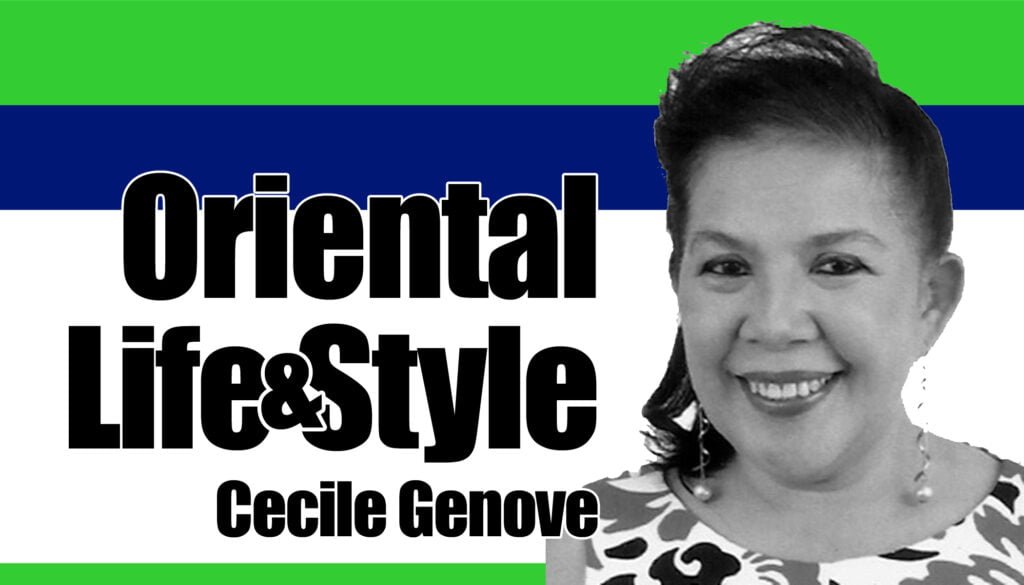
Much of what the province of Negros Oriental is enjoying today in terms of progress and development is due primarily to political will. The byword that is the Galing Pook Awards earned for the province two projects that got the nod of the jurors in terms of effectiveness in implementation and viability.
One of them focused on the partnership among local government units, non-government organizations, and people’s organizations in implementing an effective health care delivery system specifically in the so-called Sta. Bayabas district, a combination of two municipalities (Sta. Catalina and Basay) and one city (Bayawan City) in the southern part of Negros Oriental.
Sta. Bayabas has one district hospital with 75 beds and two primary community hospitals. In addition, the locality has 62 barangay health stations. Serving the catchment area population of 292,649 its number of barangays has totaled to 60 with a total number of households of 38,728.
The improved service delivery of Sta. Bayabas is anchored on the opportunities as provided by the Local Government Code. These are: the granting of local autonomy; participatory governance; devolution of basic health services; increase in financial resources; and preferential treatment for marginalized groups.
The program is likewise guided by its vision of a peaceful community; people who are God-loving, healthy, gender-sensitive, and productive; living in a life-sustaining environment; and, united by a government that is responsive, efficient, and participatory.
The Sta. Bayabas District Health System is the offshoot of the concerted efforts of the officials of the local government units involved, the Department of Health Region 7, and Dr. Fidencio Aurelia, then Chief of Hospital II and vice-president for the Visayas of the Philippine Health Association.
Dr. Aurelia expounded that in order for a program to be successful, it should strive to “make a difference.” Other programs of a similar nature, however noble and laudable its objectives are, may find themselves on the brink of failure because of many reasons and factors.
Thus, according to Dr. Aurelia, the people involved in the program should aim to be the best and appear different from the rest. “This should then excite the beneficiaries because the frontliners create enthusiasm among them. It will consequently have what we call as the ripples effect because this enthusiasm radiates to others who may only have heard of the program. Sometimes, it also helps if there are a few ‘controversies’ so people will be intrigued by the program. However, caution must be exercised that these ‘controversies’ do not work to the disadvantage of the program and the people working behind it,” explained Dr. Aurelia.
With that particular framework, the efforts that have been done will hopefully lead to concrete, better results as they will definitely be appreciated by the beneficiaries.
The strategies that may be employed can vary, like promoting livelihood among the people, thus empowering them to be self-reliant. With the improvement of basic health services, the population will expectedly be able to lead more productive, happier lives.
The people’s health program – which looks forward to a healthy future for all – contains many elements that contribute towards its effectiveness and viability. Without them, any health program would prove futile. These are: education, livelihood promotion, the availability of drugs or medicine, maternal and child care, environmental sanitation, nutrition, and the treatment of common illnesses. It should then undergo self-assessment to determine its reliability. The latter is done by the family health worker, the barangay health worker, and some non-government organizations.
With the establishment of a center of wellness, its approach to health care service is integrative. It seeks to integrate western and eastern healing practices or methods. The program likewise proves that it is possible to have health professionals and traditional healers converge under one roof. Because of the spirit of integration, the physical, mental, social, and spiritual aspects of wellness are meticulously managed. The people are able to experience the best elements of the program through medical checkup, physiotherapy, the use of herbals, as well as going into meditation and spiritual healing.
Because of its being the pioneer district in the Inter-Local Health Zone, Sta. Bayabas was awarded as the best district health system initiator all over the Philippines. The district received more than 75 technical visits from all over the country and even other countries because it was recognized as the top Inter-Local Health Zone, making the devolution of health care service delivery work, including the screening of newborn infants.
Dr. Aurelia explained further: “When we talk about the profitability aspect, there seem to be too many obstacles. But if we talk of service, I think the obstacles can be remedied. We have served so many babies through newborn screening because we don’t talk about profit. We are now trying to influence the neighboring municipalities with the same thinking. What I’m doing now is to document the sustainability of the newborn screening program to come up with a publication that may benefit other local governments and Inter-Local Health Zones.”
As far as sustaining the program, Dr. Aurelia recommended the active participation of the community, genuine local government governance, and creative financing scheme.
If a program is bound to succeed, the community should always be involved because it is the source of the problem; and, since it is the source, it can also identify the solutions.
In the Sta. Bayabas health zone, the LGU leaders are properly oriented of any program that will enter their system. Hence, even before the law was enacted, they were already aware of the newborn screening program.
“We are not just able to convince the LGUs, we have also expanded to the provincial level. We have convinced the Sangguniang Panlalawigan to create an ordinance on the newborn screening program to be implemented in all health facilities,” Dr. Aurelia added.
Bayawan District Hospital, as initiator, now acts as trainer/resource of the program for the province with funding from the community health funds.
Financing is the most important in ensuring sustainability of a program or project.
“In the financing aspect, wherever we go, the usual answer is we cannot afford. I say, affordability depends on how you will treat your expenditures. If you spend for the future of a baby – and this is for a lifetime – you invest only Ps 550- Ps 600 now and you are protecting the baby until adulthood and old age,” concluded Dr. Aurelia. | NWI




